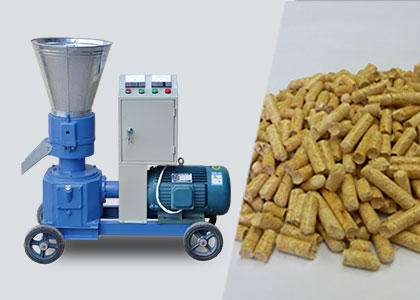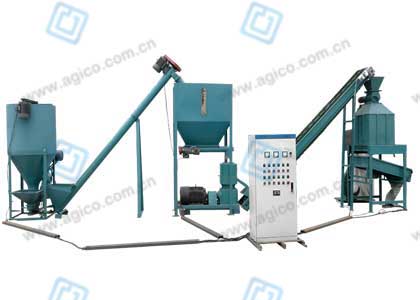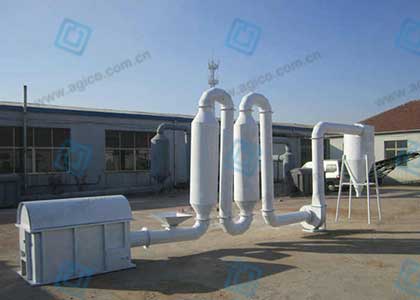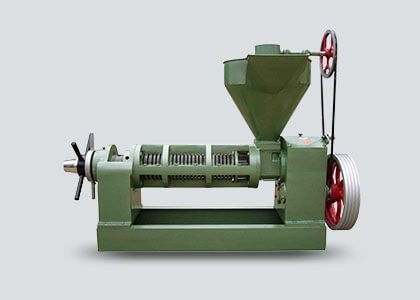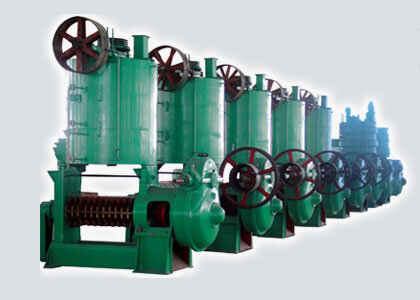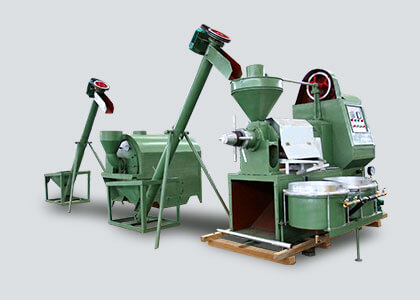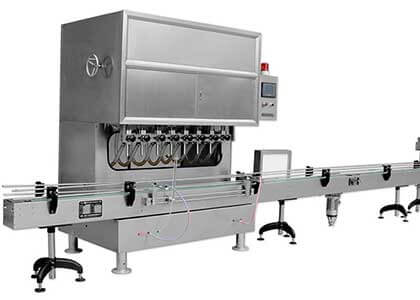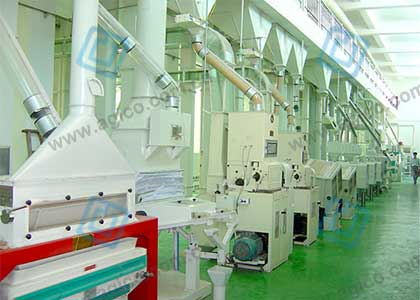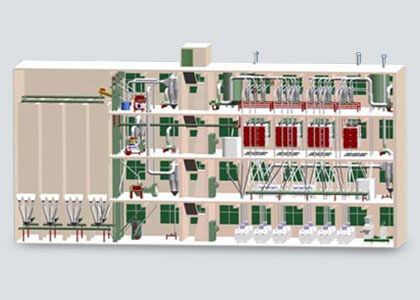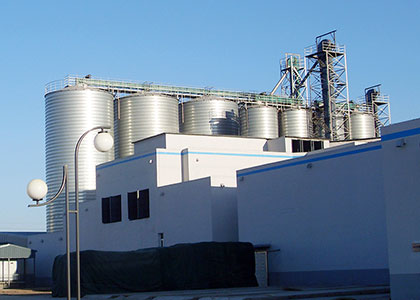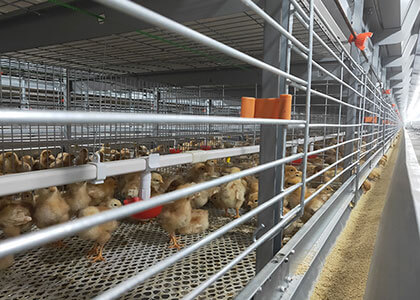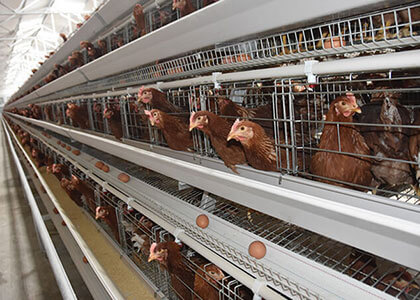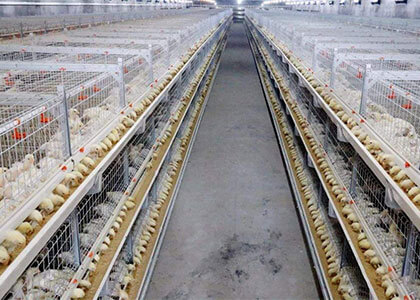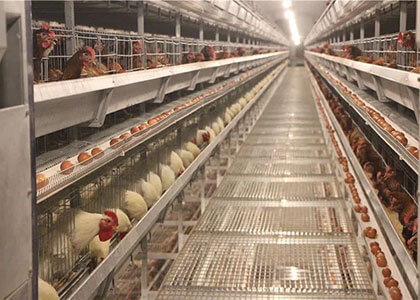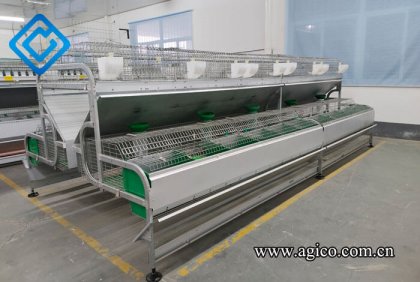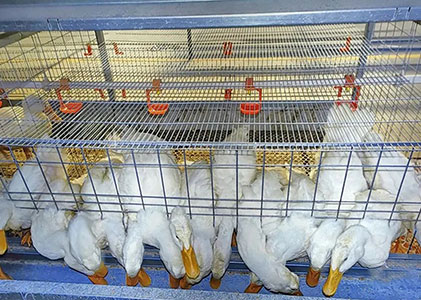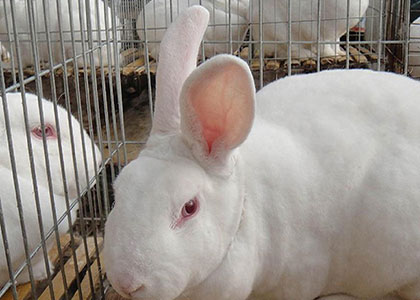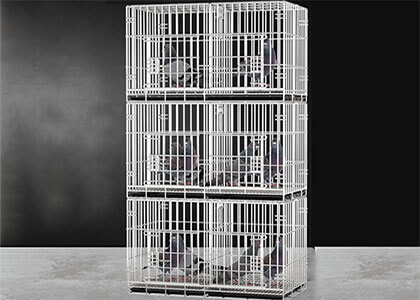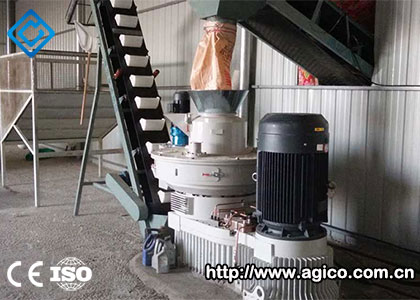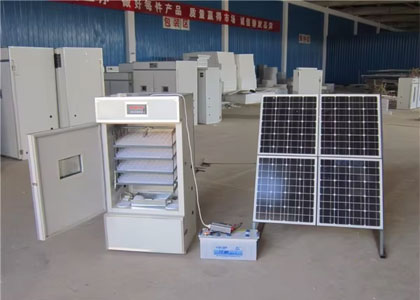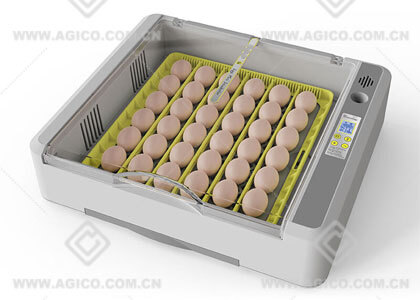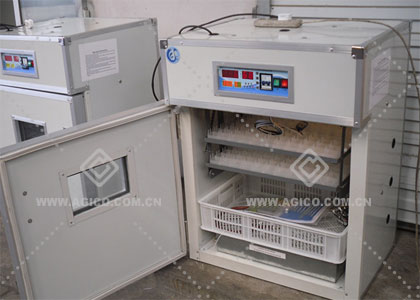Essential Elements of Effective Commercial Rabbit Cage Design
Rabbit cages are important places for rabbits to live and move around. An effective commercial rabbit cage design can not only promote the healthy growth of rabbits, but also effectively reduce feed and labor costs and improve breeding efficiency. A complete rabbit cage structure consists of a cage body and auxiliary equipment. The cage body includes the cage door, cage bottom (composed of a step net, pedal, and bottom plate), side nets (grid structures on both sides), rear window, cage top (top net), and manure board.
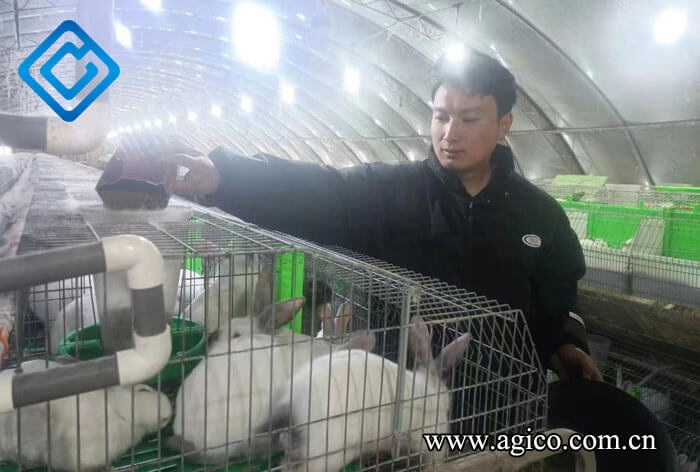
Regarding commercial rabbit cage design, it is crucial to consider rabbits' biological characteristics and living habits. This ensures that the design of the commercial wire rabbit cages is economical, practical, durable, and easy to manage daily. The size and dimensions of the rabbit cages should be adjusted based on the breed, type, gender, and age of the rabbits. Generally, the cage length should be 1.5 to 2 times the body length of the rabbit, the width should be 1.3 to 1.5 times the body length, and the height should be 0.8 to 1.2 times the body length. These dimensions ensure that rabbits can move freely within the cage, reducing stress and making it easier for caretakers to manage and operate.
Key Points of Commercial Rabbit Cage Design
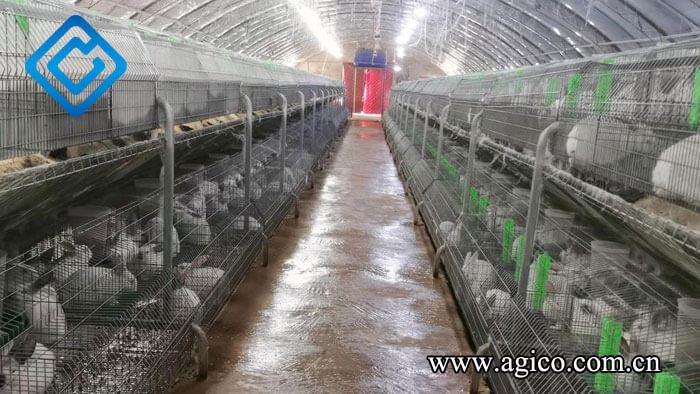
Rabbit cage door
The door is a crucial component of a commercial rabbit cage. Most commonly, front-opening doors are used, but there are also top-opening and front-top opening designs. Typically, these doors are pivot-style, opening left and right or up and down, though some are sliding doors that open sideways. Regardless of the type, the cage door should be easy to open and close, secure when shut, noiseless, and resistant to deformation.
There are single and double-door options. Larger rabbit cages, such as those for large breeding rabbits or small groups for fattening, often use double doors. Various accessories are typically mounted on the cage door, such as hay racks, feed boxes, record cards, and water dispensers. Single-nipple automatic waterers are often installed on the rear wall or top mesh of the rabbit cage.
The materials for cage doors are diverse, including iron mesh, iron bars, bamboo boards, wooden boards, and plastic. The side nets and the bottom wires near the front door of the rabbit cage should have adequate density to prevent young rabbits from escaping. The width of the cage door depends on the size of the cage, generally ranging from 30 to 40 cm, with a height equal to or slightly lower than the front height of the rabbit cage.
Commercial rabbit cage mesh
The mesh is the most critical part of a rabbit cage because rabbits come into direct contact with the floor mesh. Therefore, the material, mesh size, and smoothness of the floor mesh directly impact the health of rabbits and the hygiene inside the cage.
An ideal mesh should be smooth yet not slippery, sturdy with a degree of flexibility, easy to clean and disinfect, corrosion-resistant, and able to promptly remove feces and urine. The gap between mesh wires is best controlled at around 1.2 cm. For weaned young rabbits, the mesh holes should be 1.0 to 1.1 cm, while for adult rabbits, they should be 1.2 to 1.3 cm.
In large-scale and factory rabbit farming, the floor mesh of commercial wire rabbit cages often uses welded metal wire mesh. The metal wire typically has a diameter of 2.3 mm, and the mesh size ranges from 20×150 mm to 20×200 mm.
The advantages of this type of mesh include resistance to chewing, ease of cleaning, suitability for various disinfection methods, and efficient removal of feces and urine without trapping rabbit legs. However, welded metal wire mesh conducts heat quickly. If the galvanized coating is too thin or the manufacturing process is inadequate, it may lead to rusting issues. The weld points of the metal wire mesh should be flat and secure. This type of floor mesh is suitable for medium-sized rabbits with dense fur, such as New Zealand and California rabbits. For larger rabbits, the use of welded metal wire mesh may lead to pododermatitis.
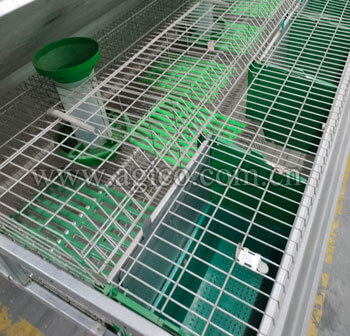
Mesh for commercial rabbit cage
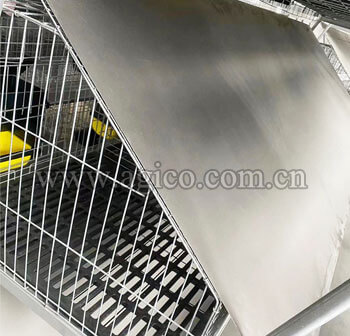
Manure board for commercial rabbit cage
Manure board
The manure board should be made of prefabricated cement or fiberglass panels, with a thickness of 2.0 to 2.5 cm. It should be leak-proof, corrosion-resistant, and easy to clean and disinfect. In multi-tier rabbit cages, the manure board of the upper layer serves as the top of the lower cage. To prevent waste and wash water from the upper cages from contaminating the lower ones, the manure board should extend 3 to 5 cm in front and 5 to 10 cm at the back of the cage. The board should have a front-to-back incline of 2% to 15%, allowing waste to automatically fall into the manure gutter and facilitating easy cleaning.
Types of Commercial Rabbit Cages
Different types of commercial rabbit cages can be chosen based on economic level, ecological environment, traditional practices, breeding purposes, breeding scale, and rabbit breeds. There are many types of commercial rabbit cages, which can be categorized by material into commercial wire rabbit cages, prefabricated cement rabbit cages, wooden rabbit cages, and bamboo rabbit cages. Among these, commercial wire rabbit cages are the most widely used, suitable for medium to large-scale rabbit farms.
Commercial wire rabbit cages can be further divided into overlapping cages, stepwise cages, and semi-stepwise cages based on their structure.
Overlapping rabbit cages (H-Type rabbit cages)

In H-type rabbit cages, the upper and lower cage bodies are completely overlapped, with manure boards set between the layers, typically having 3-4 tiers. This design maximizes the utilization of the rabbit house and increases the breeding density per unit area. However, the number of overlapping layers should not be excessive, generally limited to 2-3 layers.
| Dimension(mm)/set | Size(mm)/cell | Front hight of cell(mm) | Back hight of cell(mm) | Door size(mm) |
|---|---|---|---|---|
| 1800×600×1500 | 600×600 | 450 | 300 | 300×300 |
Full stepwise rabbit cages (A-Type rabbit cages)
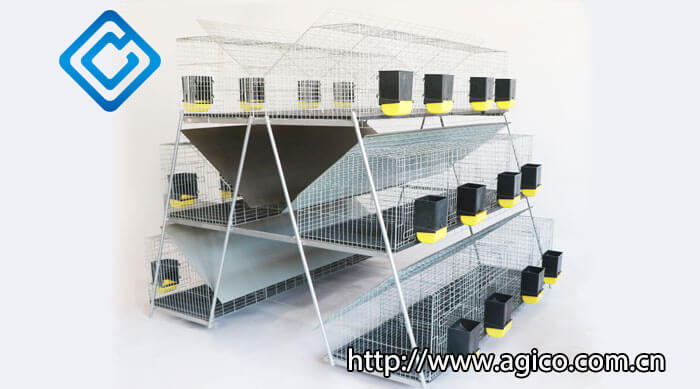
In A-type rabbit cages, the upper and lower cage bodies are completely staggered, allowing waste to fall directly into the manure gutter below without the need for manure boards. This design offers high breeding density, good ventilation and lighting, and easy observation. However, the fully staggered arrangement results in a larger vertical distance, making management of the upper cages less convenient and waste removal more challenging. Therefore, full stepwise rabbit cages are most suitable for three-tier arrangements and mechanized operations.
| Dimension(mm)/set | Tier | Door/set | Area(mm)/cell | Door size(mm) |
|---|---|---|---|---|
| 2000×1800×1650 | 3 | 24 | 500×500 | 285×285 |
Semi-stepwise rabbit cages (European rabbit cages)

In semi-stepwise cages, the upper and lower rabbit cages partially overlap, with manure boards set at the overlapping parts. This design shortens the vertical distance between layers, making it easier to observe and manage the upper cages. Compared to full-stepwise rabbit cages, semi-stepwise cages offer higher breeding density and better utilization of the rabbit house. European rabbit cages also feature a nursery section in the lower tier, making them suitable for mather rabbit breeding or fattening young rabbits. Combining the advantages of both full stepwise and overlapping cages, they are suitable for both manual and mechanized management, making them practical for promoting rabbit farming.
| Cage model | Cages per tier | Nesting box/set | Length(mm) | Width(mm) | Height(mm) |
|---|---|---|---|---|---|
| 12 doors rabbit cages | 6 | 6 | 1800 | 2000-2200 | 1500-1700 |
| 16 doors rabbit cages | 8 | 8 | 2400 | 2000-2200 | 1500-1700 |
| 24 doors rabbit cages | 12 | 12 | 3600 | 2000-2200 | 1500-1700 |

